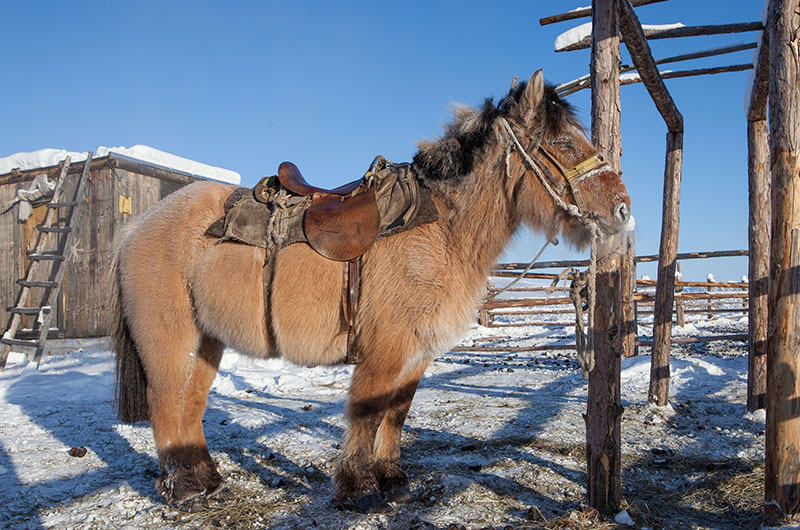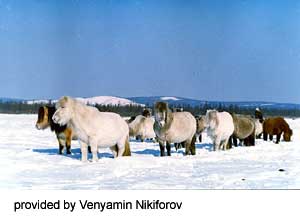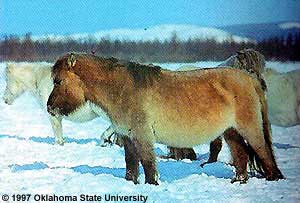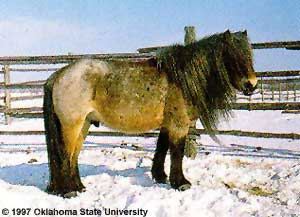Yakut Horses
 The Yakut was developed in Yakutia by unconscious and natural selection in the harsh
conditions of northern and central Siberia, Russia.
The Yakut was developed in Yakutia by unconscious and natural selection in the harsh
conditions of northern and central Siberia, Russia.
Compared to horses of similar type and Mongolian origin, the Yakut is larger and more massive. Three Yakut types have been formed: the Northern original Yakut (the Middle Kolyma or Verkhoyansk horse); the smaller southern type which was not crossed with improved breeds; and the larger southern type tending towards the breeds used for the improvement of the local Yakut. The last type is widespread in the regions of central Yakutia, including Yakutsk, Namtsi, Orjonikidze, Megino-Kanglass and Amga regions, where trotters and heavy draft horses were used for improvement.

The Middle Kolyma is the most valuable horse. It has greater homogeneity and size. Typically the head is coarse, the neck straight and average in length, the withers low, the back wide and long, the croup drooping the chest wide and deep, the legs short and with solid hoofs. The mane and tail are thick and long. The hair on the body is very thick; in winter it is up to 8 cm in length. The color of the Yakut is usually bay, grey-brown or grey; less often roan or mouse grey. Native horses have a dark stripe down the back and transverse stripes on the forelegs. A dark grid-like pattern is often found on the point of the shoulder.
The measurements (in cm) of Middle Kolym stallions are: height at withers 139, oblique body length 148, chest girth 173, cannon bone girth 19.7; the mares are 137, 145, 171 and 18.1 respectively. The measurements of the smaller southern type are much less with 135, 141, 163 and 18.4 in stallions and 132, 138, 158 and 17.2 in mares.

The larger southern type includes descendants of the local Suntar, Megezh and Olekminsk varieties. They show traces of trotter and, to a less extent, draught blood. The body measurements are (in cm): stallions 141, 149, 182 and 18.4; mares 136, 150, 176 and 18.4. Considering these measurements the Yakuts have quite a high live weight - 450 kg on average with a range from 430 to 470 kg.

The Yakut is a good meat producer; the carcass weight of 6-month-old is 105 kg, reaching 165 kg by 2.5 years of age and 228 kg in adults. The high milk yield of the Yakut is also worthy of note. At the experimental farm of the Yakut Institute of Agriculture the mares produce 1200-1700 kg of marketable milk in a 6-month lactation.
The outlook suggests pure breeding since with extensive husbandry and primitive management crossbreeding fails to yield the desired result. The leading Yakut breeding facilities are Leninski state farm and Karl Marx collective farm in the Yakut ASSR.
References
Dmitriez, N.G. and Ernst, L.K. (1989) Animal Genetic Resources of the USSR. Animal Production and Health Paper Publ. by FAO, Rome, 517 pp.
